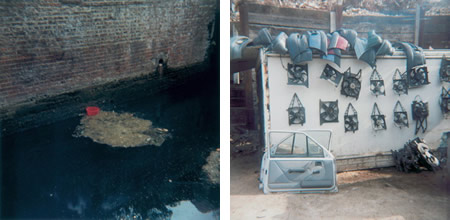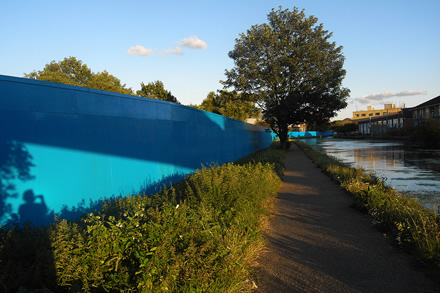
In a recent article in the Guardian, Robert Macfarlane and Iain Sinclair walk the perimeter of the 2012 Olympic Park, accompanied by photographs by Stephen Gill.
Gill has been documenting the lives of spaces of the borough of Hackney for several years, and for his most recent publication Archaeology in Reverse, captured the early stages of the transition from urban hinterland to Olympic Park.
[Order Archaeology in Reverse from Amazon ]
Gill and Sinclair, in their respective work, both inhabit the slippage between the reality of the landscape of Lower Lea Valley, and the utopian ahistorism of large scale 'regeneration', especially the gleaming heroism wrapped up in the Olympic 'vision'.
"The ODA has worked hard in its literature to cast the Lower Lea as a fouled zone, culturally void and ecologically wrecked: it is "contaminated, derelict and abandoned". Such language prepares the way for a heroic clearing and cleansing of the area, and for the hygienic raptures of the Olympic Park itself. Let there be no doubt, the Lea is dirty. Among other serious problems is thorium pollution, following the illegal dumping of fissile material into a cesspit."
What the ODA will not acknowledge, however, are the many improvised ecologies - human and natural - that have long thrived in this region of "bastard countryside" (as Victor Hugo once called such city edgelands). The best example is The Manor Gardens Allotments, a plot bequeathed to the area a century ago by a philanthropist called Major Villiers. All allotments are beautifully chronic places: developed over time, cobbled lovingly into being. The Gardens' 80 plots provided food for more than 150 families during the summer months. They were also superbly biodiverse. In the phrase of their defenders, they were a "life island" of the East End. The Gardens are now locked off behind the blue fence - and due to be bulldozed this month."

[Flickr image by Johanna]
As others have described, the site requisitioned by the ODA for the Olympic park is now encircled by a 11-mile long lurid blue fence, with crack squads of fence painters ready to overpaint any graffiti at a moments notice.
As Brian Finoki at Subtopia puts it:
"the Olympic fence is "the emblem of an Olympic sham; a politics of 'microbordering' that carefully carves sites of wealth with both blatant and disguised forms of exclusion."
Consider it an instant Christo, right here in the heart of London.
